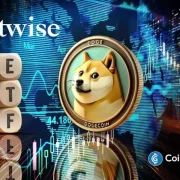
Covered call ETFs have become highly popular among income investors in the past few years because of their high distribution rate. The JPMorgan Nasdaq Equity Premium Income ETF (JEPQ) is one of the most popular. This article explores why the QQQI ETF is a better buy.
What is the QQQI ETF?
The NEOS Nasdaq-100 (R) High Income ETF is a relatively small ETF with over $5 billion in assets, much lower than JEPQ’s $30 billion.
It is a fund that aims to provide investors with a regular dividend by leveraging the concept of covered call strategy.
The fund’s main approach starts with acquiring all companies in the Nasdaq 100 Index. Its portfolio is made up of companies like Nvidia, Apple, Microsoft, Broadcom, Amazon, and Meta Platforms.
After that, the fund sells call options on the NDX, which helps it to generate a premium, which it uses to distribute to its shareholders. It also receives dividends from its equity investments, which it uses to return to the shareholders.
The main difference between the QQQI ETF and JEPQ is that it leverage other strategies to generate a return and minimize taxes.
For example, in some instances, in addition to the main call options strategy, the fund may enter a call spread strategy where it purchases long calls in addition to the written call options. By doing that, the fund generates a return through the net credit spread.
Most importantly, unlike the JEPQ ETF, it aims to reduce the taxes that investors pay. It does that by using index options like the NDX call options that qualify as “Section 1256” contracts.
The benefit of these index call options is that, if they are held at the year end, it will always receive a favorable tax treatment by the IRS because they will be deemed as if they were sold at fair market value on the last business day of the tax year
The contracts are also treated as 60% long-term gains and 40% short term gains if the contracts produce a capital gain or loss.
Additionally, this fund uses the tax loss harvesting strategy to reduce taxes. In this, the fund takes investment losses from some equities to offset profits made by other assets.
QQQI is beating the JEPQ ETF
The QQQI ETF is a bit more expensive than the JEPQ fund. It has an expense ratio of 0.68% compared to JEPQ’s 0.35%.
However, despite this, history shows that it has a better performance, making the fees worthwhile. For one, it has a dividend yield of 14% compared to JEPQ, which has a return of about 10%.
Data shows that QQQI’s total return this year is 14.65%, higher than JEPQ’s 9.5%. Similarly, their performance in the last twelve months was 21% and 16.65%, respectively.
Still, as we have written before, these covered call ETFs are ideal to complement the main funds like QQQ and QQQM since these ones have a long track record of performance. QQQ has had a total return of 22% in the last 12 months, slightly higher than QQQI’s 21%.
The post Avoid JEPQ and buy the 14% yielding QQQI ETF instead appeared first on Invezz










